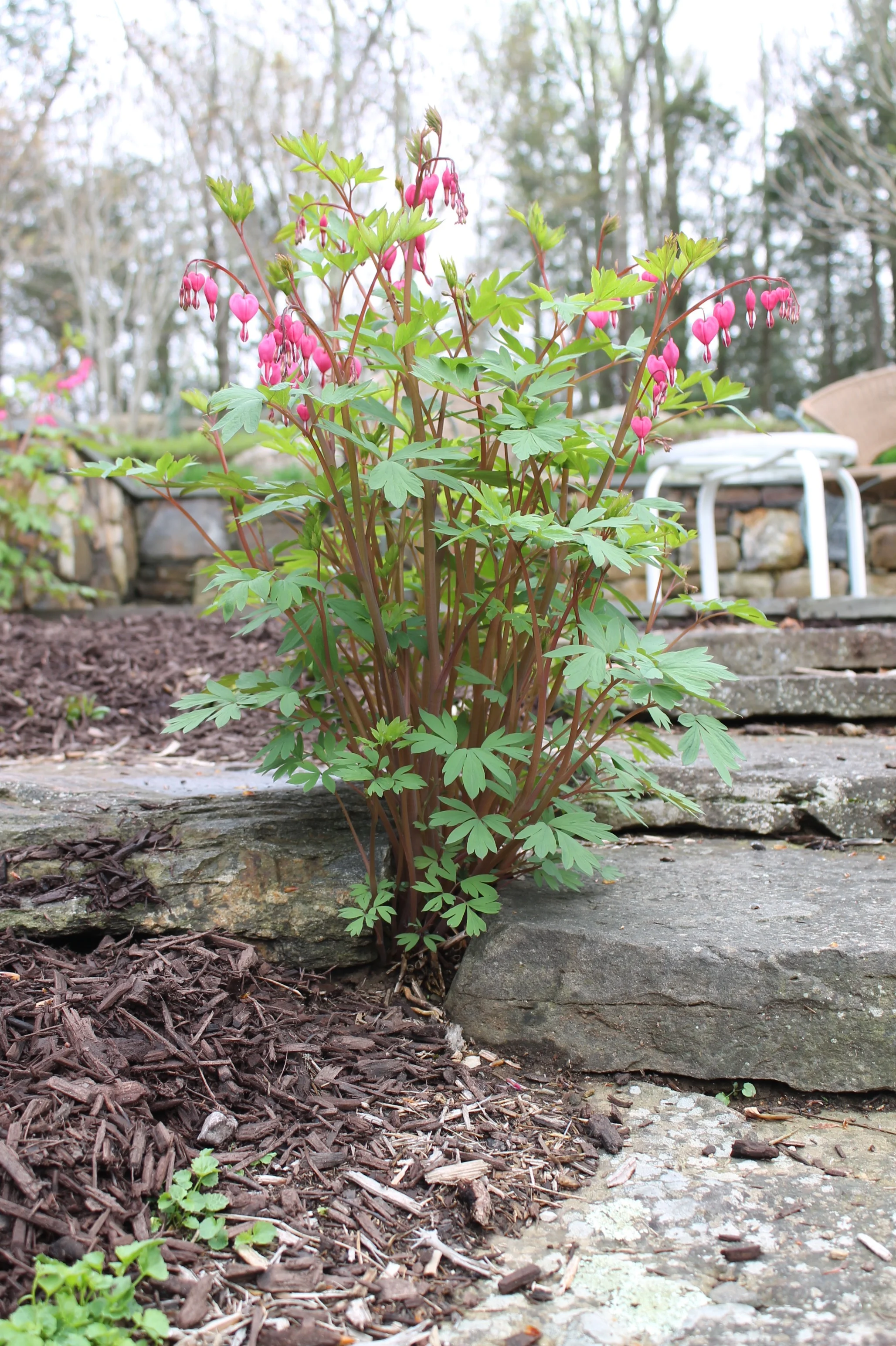No matter how carefully I try to match plants to the right location -- based on the amount of sun or shade, moisture, compatibility with neighboring flora, and generally good karma -- they always seems to outsmart me. Sure a few of them remain where I put them, and some even thrive. But more often than not, one of two things happen.
Some emphatically demonstrate their displeasure with me by looking all parched and pathetic, so I have to dig them up, make a new hole (no easy task, as you can see here), add fertilizer and compost, replant, and hope they're happier.
Others take matters into their own hands... er... roots... making sure that the next generation has a chance at a better life. They must spend the winter silently consulting with plant realtors, attending open houses, negotiating terms, and driving hard bargains. Hard, as in rock hard. Because come spring, more often than not their offspring have found a new home in a tiny crevice between large and unyielding paving stones.
Dicentra is particularly adept at this stealth migration, making itself at home in some of the most unlikely spots. It's particularly fond of a teeny crack between two large steppers, where I couldn't have planted it even if I used tweezers. There it is below on the left, where it's been happily ensconced for several years, looking so healthy that it really would be criminal to move it. On the right is a younger cousin, newly moved in this season, looking just as happy.
Lamium is another restless plant. It's also called Dead Nettle, but there's nothing lifeless about this itinerant spreader. This one must hire Birds & Co., Movers during the off season. That's the only explanation for its popping up far from where the grandplant (several generations ago) started. It also likes cracks and crevices. Here's a new patch of a variety called "Pink Nancy" (no relation), also under foot on the path to the top terrace.
Lamium "Pink Nancy" creeping between stepping stones
Miniature yellow foxglove have laid claim to rest of the path to the top, populating almost every niche available between the stepping stones.
And up at the top of that image, you can just make out a field of Columbine. I didn't plant any of it. Not a one. That entire field moved in unannounced last year, and this year, it's expanded its territory into the path itself.
My attitude towards all these peregrinations is basically to leave them alone if they're happy where they are. They seem to be much better judges of location than I am. On the other hand, as Mr. Mulch points out, they do make it very difficult to navigate the path later in the summer when the plants reach maturity and are usually joined by some exuberant and very tall echinacea. At that point, we don't navigate it; we cede it entirely and tiptoe gingerly around them!
I suppose it's only a matter of time before the Columbine and the Yellow Foxglove meet on the path and duke it out for crevice rights. Anyone care to place a bet on who wins?






